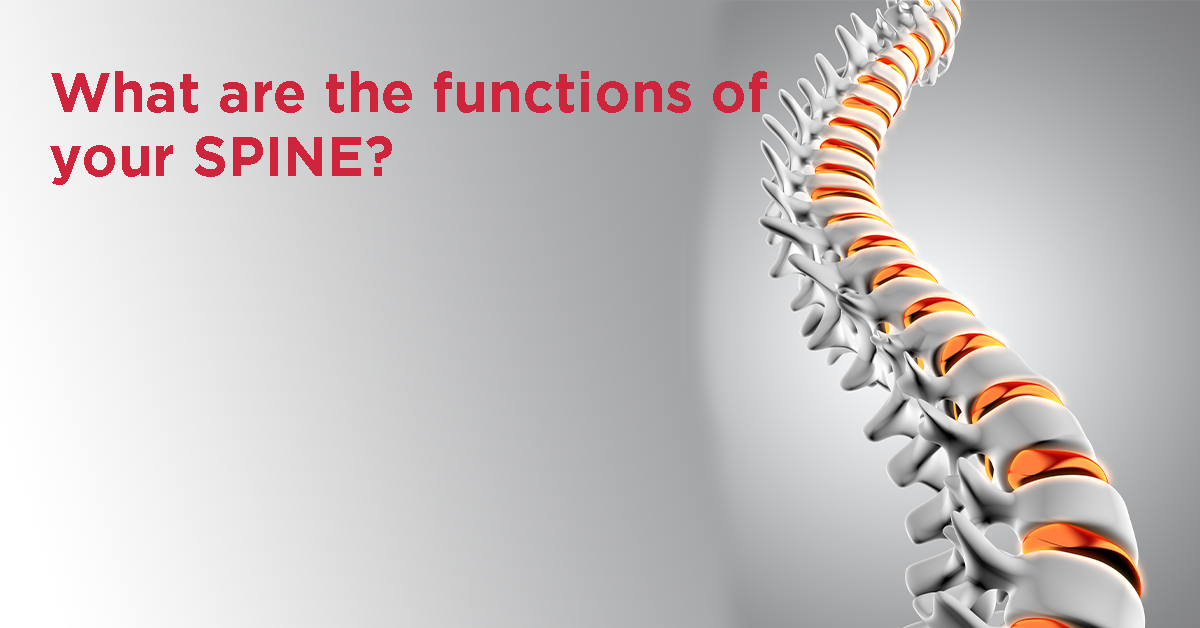What Are The Functions Of Your Spine?

The spine is an integral part of your body since it keeps you upright. The different sections of the spine vary in flexibility, with the cervical area being the most flexible. The other spine sections are the thoracic, lumbar, sacrum, and coccyx or tailbone region. It helps in the movement of your body in various directions and supports the head, arms, and torso’s weight.
The bones of the spine also protect the spinal cord that runs through the spinal canal.
Functions of The Spine:
Your central nervous system comprises the brain and spinal cord. The brain sends commands to different parts of your body through the spinal cord.
Here are the main functions of the spine:
- Motor Functions:
All the voluntary muscle movements of your body are directed by it.
- Sensory Functions:
The spine monitors sensations like temperature, pressure, pain, and touch.
- Autonomic Functions:
Whether it is your blood pressure, heart rate, body temperature, urination, or digestion, it is all regulated by the spinal cord.
Causes of Spine Pain
You can experience pain in your upper, mid, and lower spine. Here are some of the causes of upper, mid, and lower spine pain:
Overuse
If the disc, muscles, or ligaments supporting your spine are overused, you will experience spine pain. You will also experience pain if there is a muscle injury or strain.
Posture
The way you sit or stand determines your posture. If you are working on the computer for extended periods, you will develop spine pain.
Spinal Nerve Pressure
If you are suffering from a herniated disc, there is likely to be pain due to pressure on your spine’s nerves.
- Osteoarthritis:
The cartilage that acts as a cushion between the joints may be damaged, causing osteoarthritis and spine pain.
- Myofascial Pain:
Connective tissue in muscles experiences myofascial pain causing pain in the spine.
- Herniated Disc:
Lower spine pain occurs due to a herniated lumbar disc with a tear in the disc wall and the closest nerve root’s irritation.
- Degenerative Disc Disease:
The intervertebral discs dry out with age, leading to tears in the disc wall with pain or weakening. This could cause a herniation. You could also have stenosis of the spine due to the collapse of the disc.
- Spondylolisthesis:
Slipping of one vertebra over another results in spondylolisthesis.
When Do You Need Spine Surgery?
Surgery can be avoided in most cases, but they are necessary for some. Your spine specialist may recommend non-surgical remedies before considering spine surgery. These include letting the area rest, using non-steroidal anti-inflammatories, physical therapy, massage, chiropractic treatment, or acupuncture.
You would require spine surgery in the following situations:
- Damage to Spinal Disc:
If your disc is damaged and cannot absorb the spine’s compressive impact you would require spine surgery for disc removal or replacement.
- Spinal Cord Compression:
You experience pain, leg and hand weakness, or numbness when you have this condition. The spine specialist will perform surgical decompression.
- Acute Spinal Cord Injuries
You would require surgical stabilization procedures for addressing serious spinal cord injuries, including trauma due to an automobile accident, degeneration of the spine due to scoliosis, spine fractures from osteoporosis, or spinal tumors. The adjoining vertebrae are fused to provide stability to your spine with the removal of the bone fragments.
- Nerve Root Impingement
Sometimes a herniated disc puts pressure on the nerve roots causing pain, tingling, weakness, and function loss called nerve root impingement
- Leakage From Vertebral Disc
When there is bulging or leakage of fluid from the vertebral disc, it affects the adjoining nerves and causes radiation of pain; spine surgery is necessary.
Open Reduction and Internal Fixation
Osteoporosis or traumatic injury could damage your vertebrae. This would require fracture stabilization or Open Reduction and Internal Fixation (ORIF). A formal incision is made, followed by a realignment of the bones. The alignment is maintained with an implant to help the body heal the fracture naturally.
- Kyphoplasty
This minimally invasive procedure helps in the treatment of vertebral compression fractures. The spine has an abnormal curvature due to kyphosis.
- Laminectomy
This type of spine surgery is required to relieve your nerves when there is cervical spinal stenosis.
Give Your Spine The Support It Needs
When it comes to problems related to your spine, you need to consult spine specialists. If you are looking for the best musculoskeletal treatment for your spine problems, then you can trust the experts at Regency. They provide solutions for common spine disorders like broken vertebrae, spondylolisthesis, chronic low back pain, and more. Get in touch with Regency about your spinal problems today.

 Call-an-Ambulance
Call-an-Ambulance



